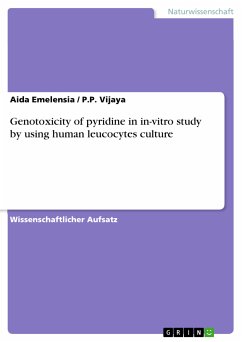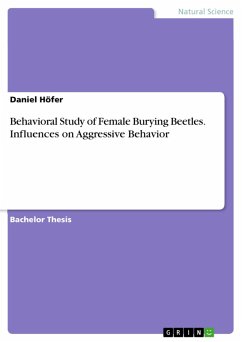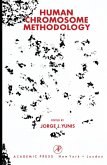Wissenschaftlicher Aufsatz aus dem Jahr 2013 im Fachbereich Biologie - Humanbiologie, , Sprache: Deutsch, Abstract: Everyone is exposed to very low levels of pyridine in air, and food. Workers who make or use the chemical may be exposed to higher levels of it. Studies in people and animals suggest that pyridine may damage the liver. This chemical has been found in at least 11 of 1,416 national priorities list sites identified by the environmental protection agency. In vitro genotoxicity tests are employed to screen chemicals for their capability to cause various chromosomal aberrations, and the results are often used to predict their potential for carcinogenicity, however, there is controversy regarding the apparent low specificity of some in vitro genotoxicity assay, which results in positive rate. Hence, we selected both carcinogen and non - carcinogen compound. The chemical exposures for two ends - points were done simultaneously. The protocol for the two end-points was developed using the carcinogen Cyclophosphamide. The non-carcinogen chosen were pyridine. By, using human leucocytes culture both the carcinogen and non - carcinogen chemicals shows chromosomal aberration, some breaks and pulverization are obtained. The chromosome breaks and pulverization obtained both in positive and negative because both have similar toxic against the normal chromosome.
Dieser Download kann aus rechtlichen Gründen nur mit Rechnungsadresse in A, B, BG, CY, CZ, D, DK, EW, E, FIN, F, GR, HR, H, IRL, I, LT, L, LR, M, NL, PL, P, R, S, SLO, SK ausgeliefert werden.









